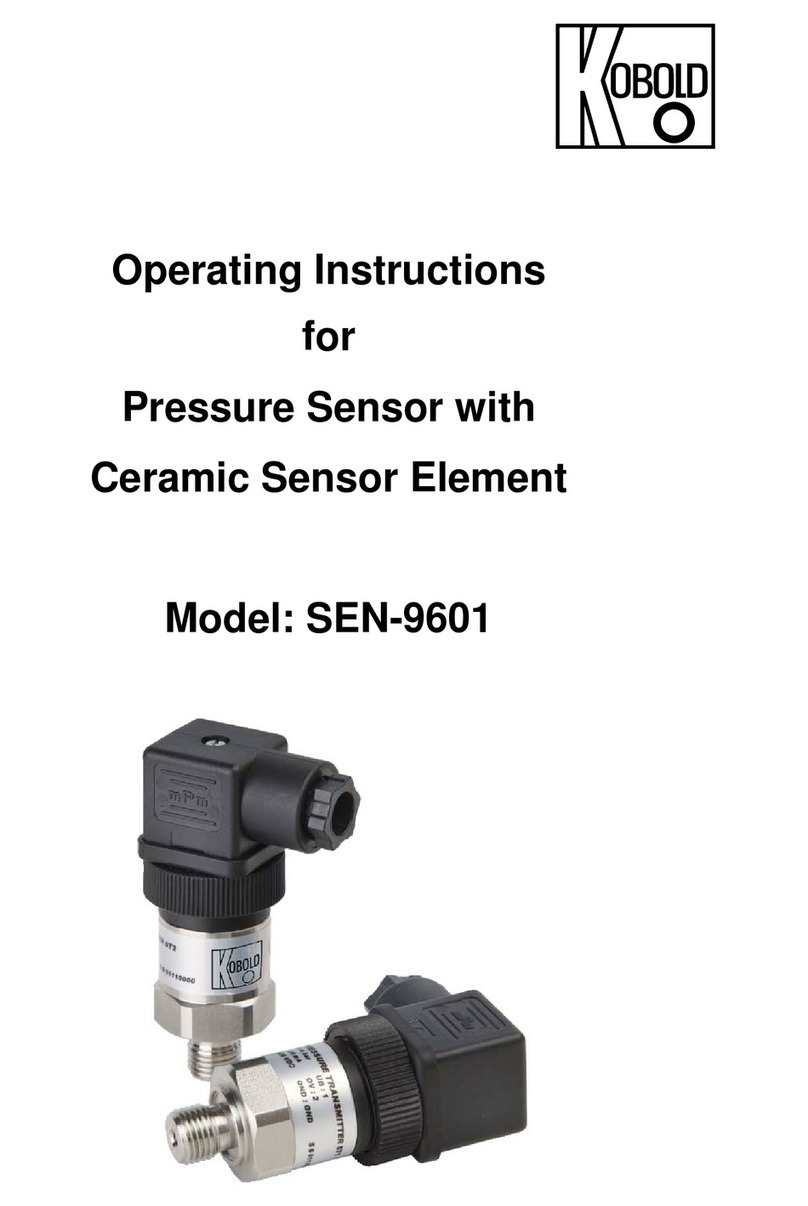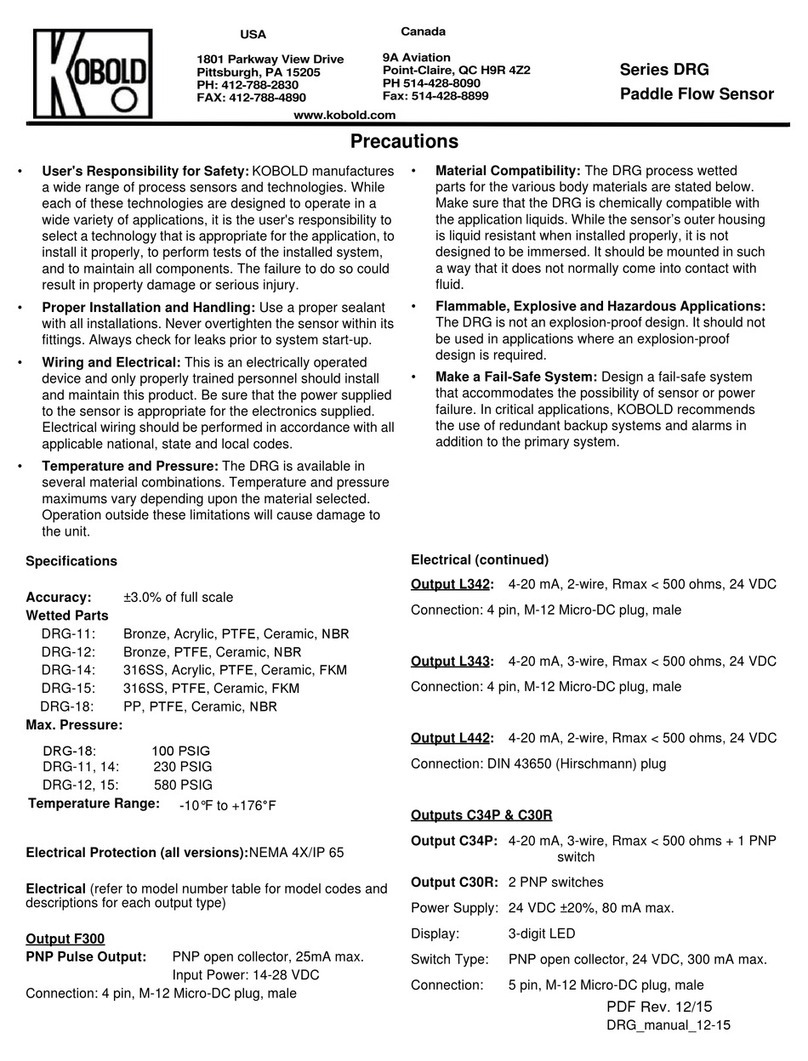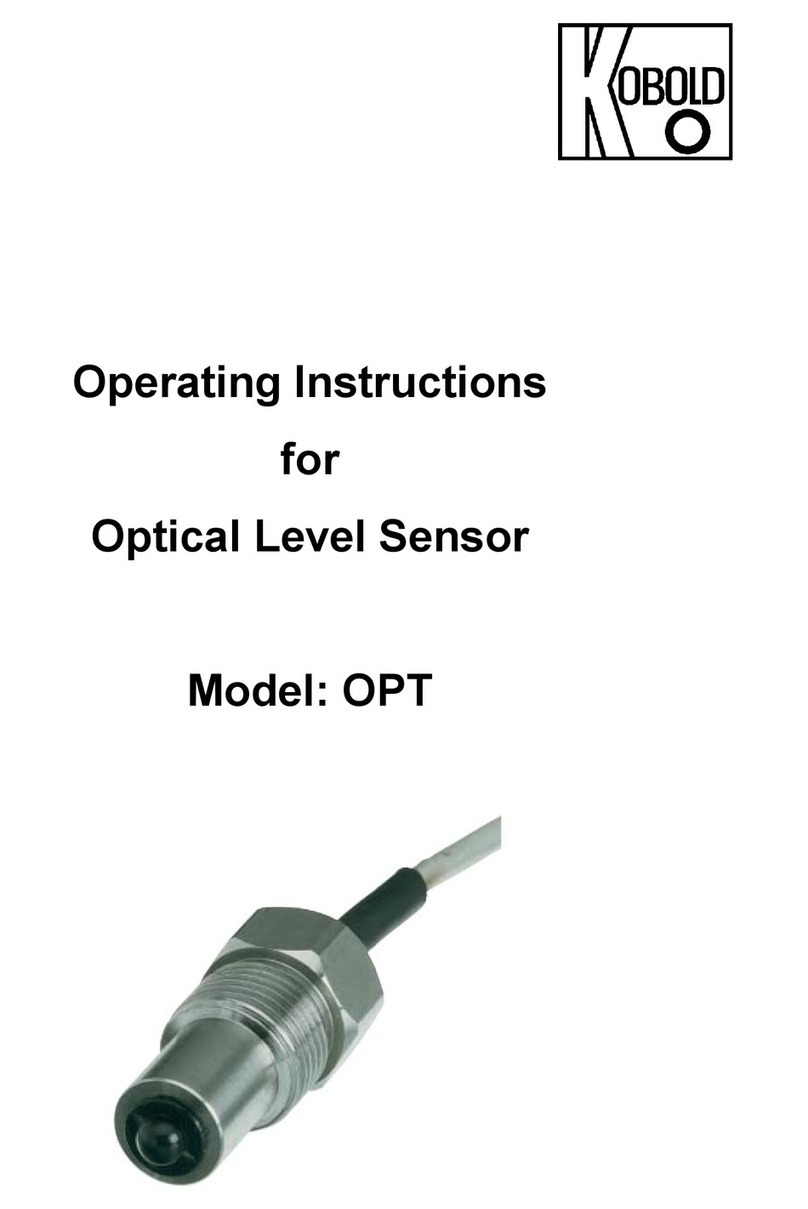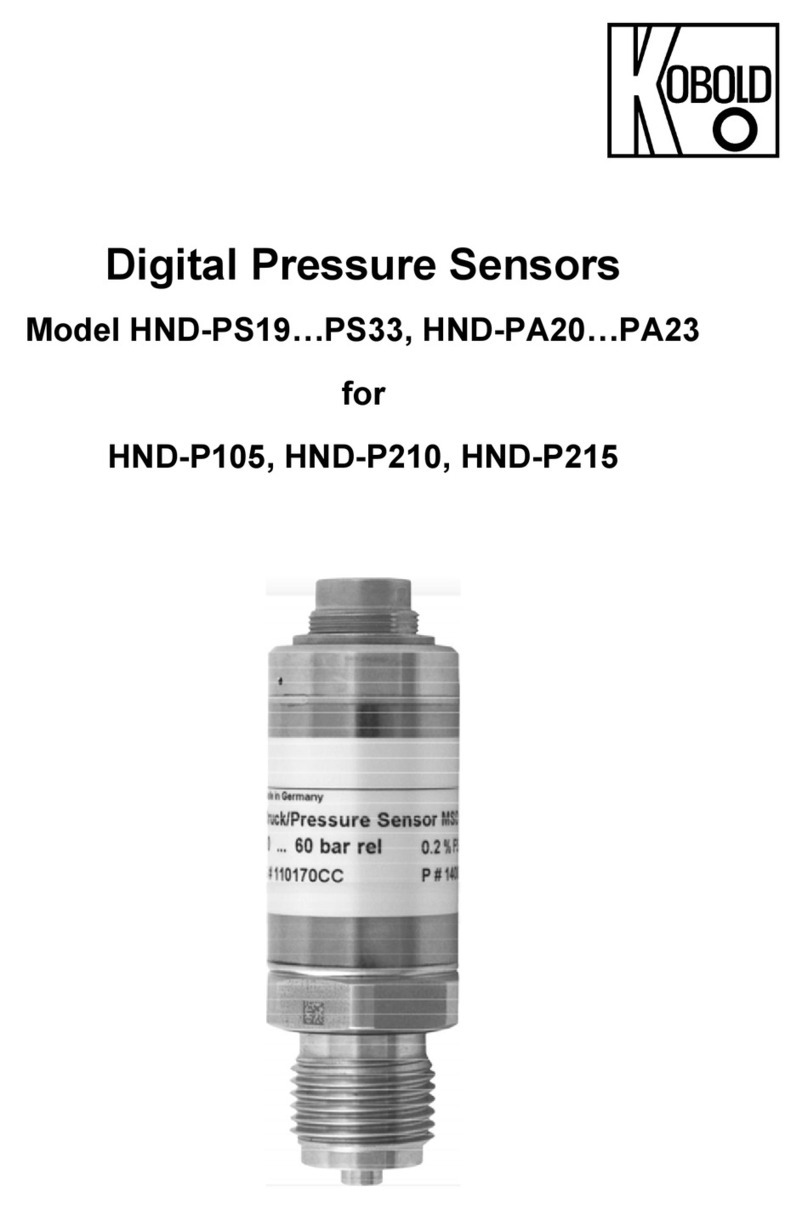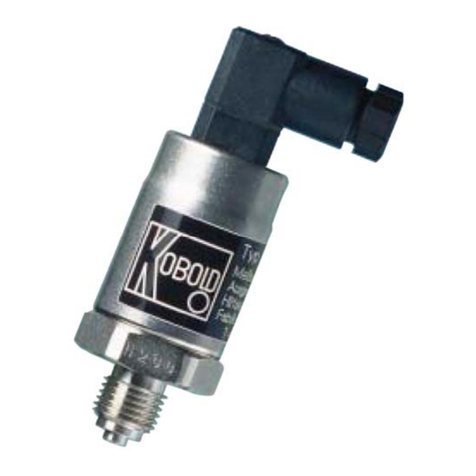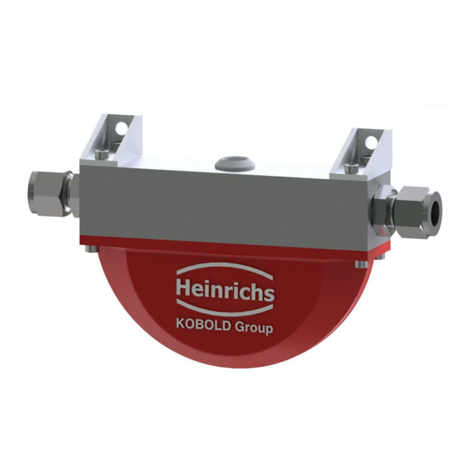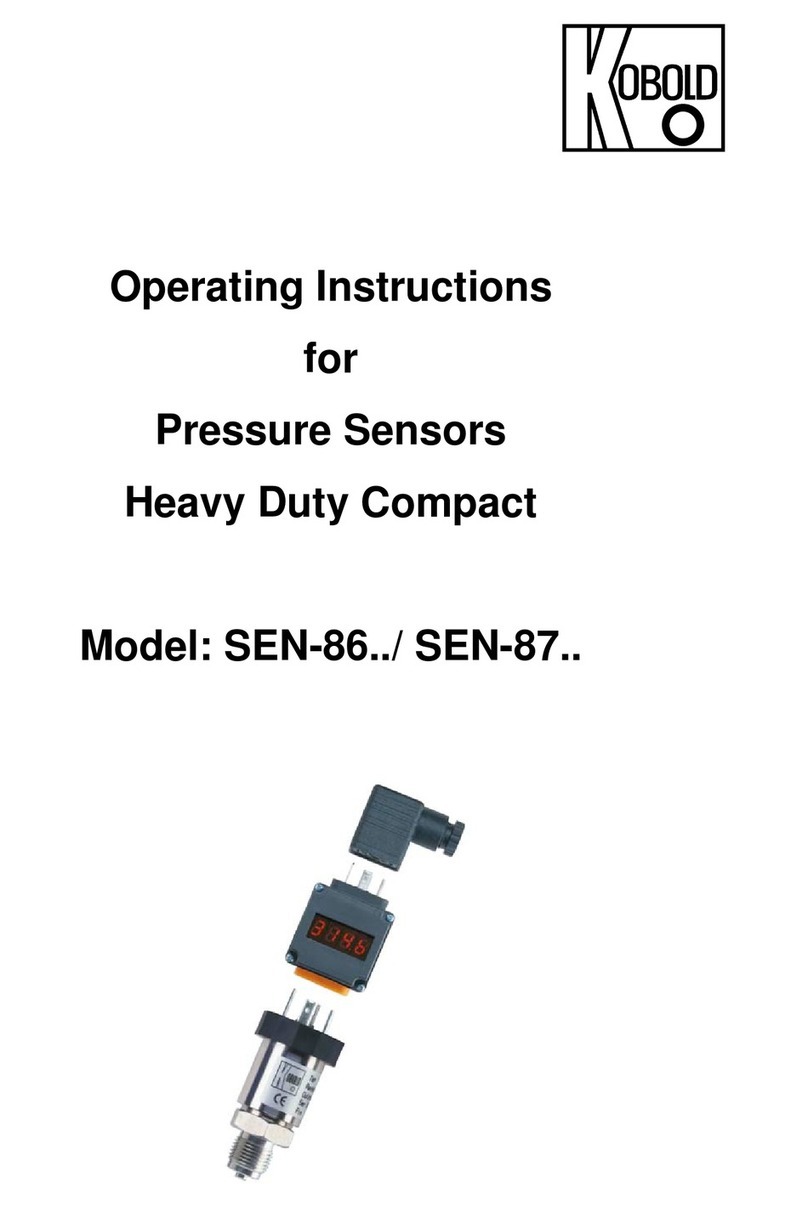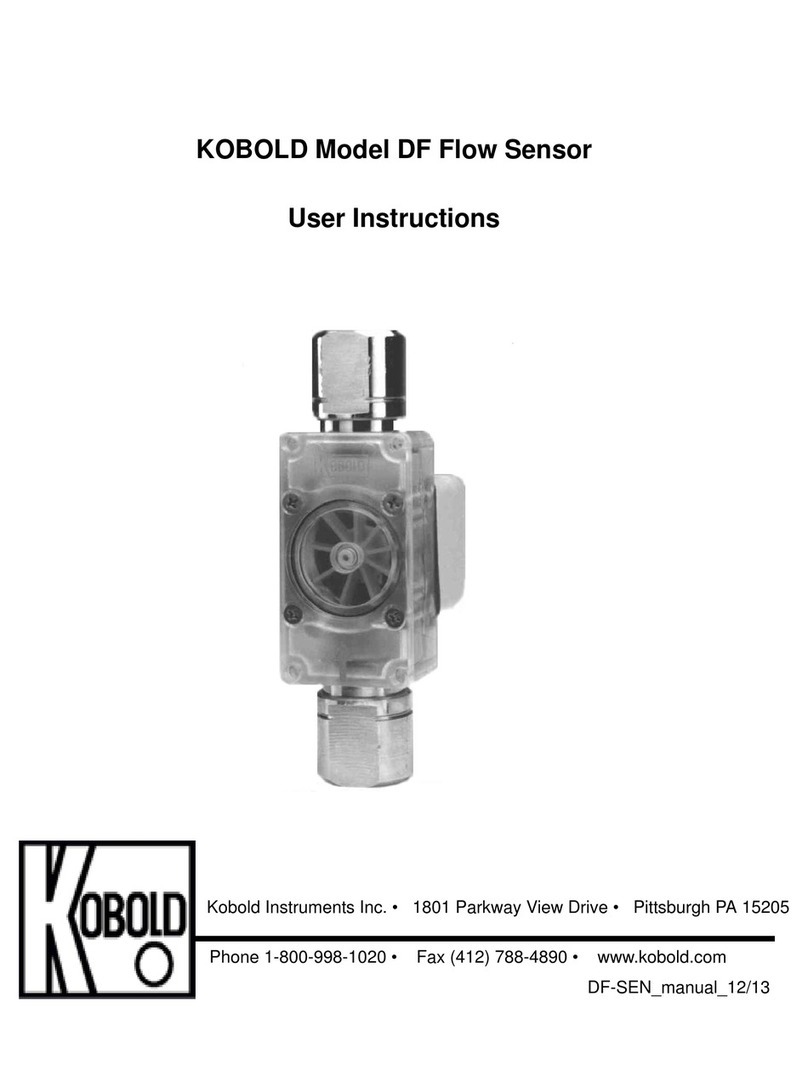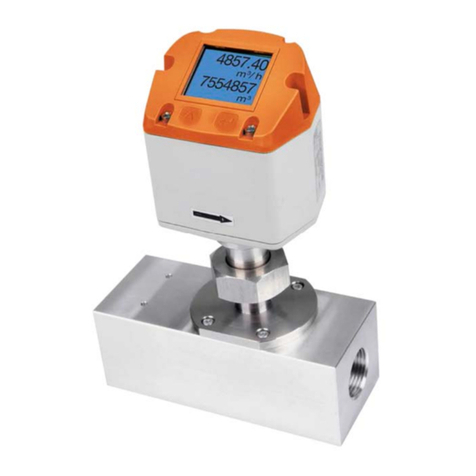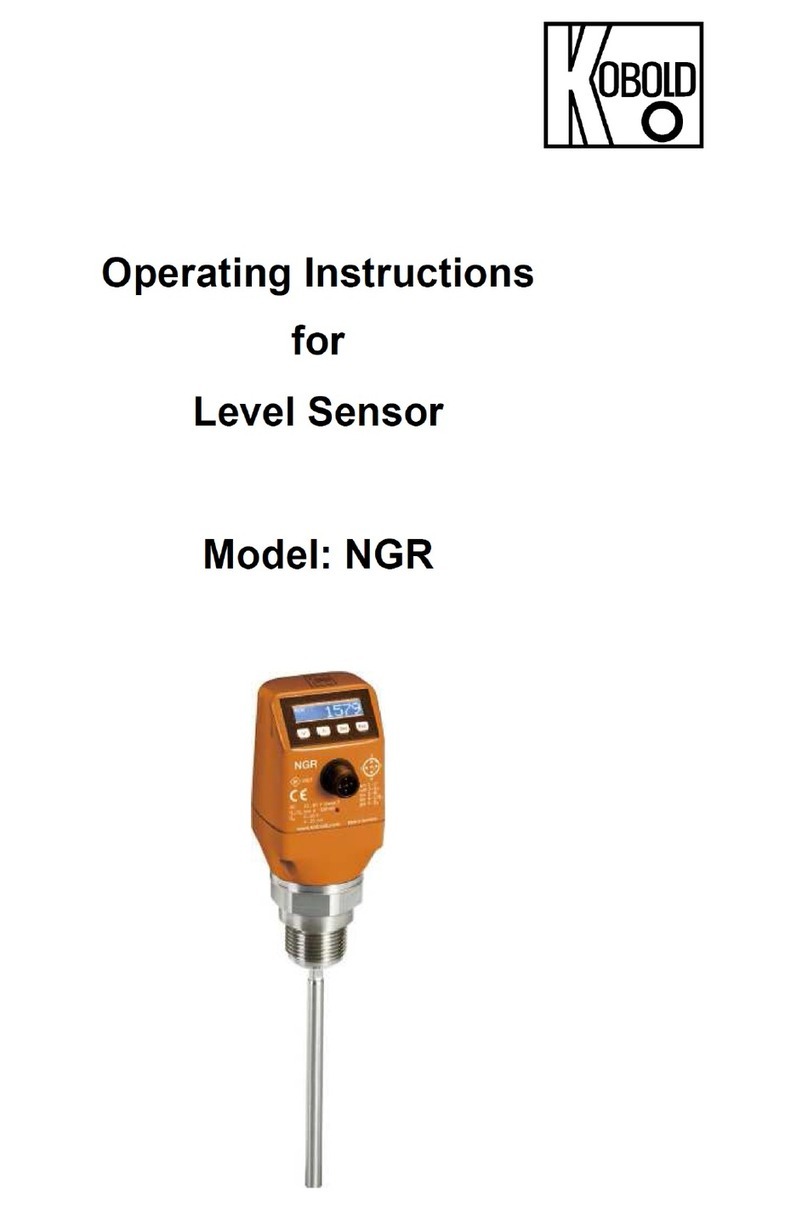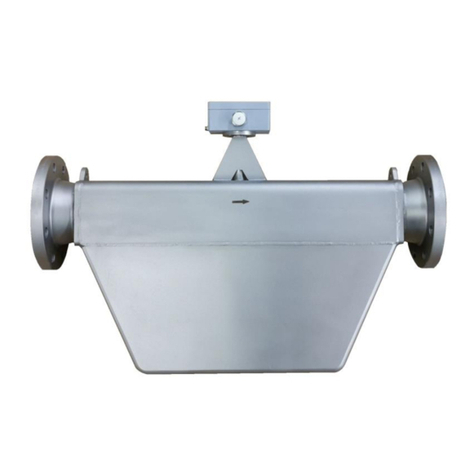
SAFETY PRECAUTIONS
Step One
Warranty Service and Repair
About this Manual:
PLEASE READ THE ENTIRE MANUAL PRIOR TO INSTALLING
ORUSINGTHISPRODUCT.Thismanualincludesinformationontwo
different models of Tuning Fork sensors from Kobold, all in the NWP
series.Pleaserefertothepartnumberlocatedonthesensorlabeltoverify
the exact model which you have purchased.
User's Responsibility for Safety:
Koboldmanufacturesawiderangeofliquidlevelsensorsandtechnolo-
gies.Whileeachof thesesensorsisdesignedtooperate inawidevariety
ofapplications,itistheuser'sresponsibilitytoselect asensormodelthat
is appropriate for the application, install it properly, perform tests of the
installedsystem,andmaintainallcomponents.Thefailuretodosocould
result in property damage or serious injury.
Proper Installation and Handling:
Use a proper sealant with all installations. Never overtighten the sensor
withinthefitting,beyondamaximumof80inch-poundstorque.Always
check for leaks prior to system start-up.
Material Compatibility:
The NWP series sensor is available in one wetted material version. The
bodyof the model NWP-1405 is made of PP (Polypropylene)
with the forks made of PPS (40% glass filled). Make sure that
the model which you have selected is compatible with the application
liquids.Todeterminethechemicalcompatibilitybetweenthesensorand
itsapplicationliquids, refer to the CompassCorrosion Guide, available
from Compass Publications (619-589-9636).
Temperature and Pressure:
The NWP series sensor is designed for use in application temperatures
up to 90 °C, and for use at pressures up to 150 psi @ 25 °C., derated @
1.667 psi per °C. above 25 °C.
Wiring and Electrical:
The supply voltage used to power the NWP series sensor should never
exceedamaximumof36voltsDC.Electricalwiringofthesensorshould
beperformed in accordance with allapplicable national, state, and local
codes.
Flammable, Explosive and Hazardous Applications:
The NWP series sensor should not be used within flammable or explo-
sive applications. In hazardous applications, use redundant measure-
ment and control points, each having a different sensing technology.
WARNING
Do not squeeze the forks together. Doing so could
damage or break the sensor and void the warranty.
If for some reason your product must be returned for factory service,
contact your Kobold distributor to receive a material return authori-
zationnumberfirst,andprovidethemwiththefollowinginformation:
1. Part number, serial number
2. Name and telephone number of a person who can answer
questions related to the product and its application
3. Return shipping address
4. Brief description of the symptom
5. Brief description of the application
Once you have received a return authorization form, ship the product
prepaid in its original packing to:
KOBOLD Instruments Inc.
1801 Parkway View Drive
Pittsburgh, PA 15205
Pleaseincludeanyrelatedsymptomandapplicationinformationwith
your product. This information enables our service technicians to
process your repair order as quickly as possible.
Tuning Fork Sensor
NWP-1405 Series
Owner’s Manual
KOBOLD
Version 2.1
12/2013, All rights reserved.
Part # NWP_1405_Manual
Order from:
C A Briggs Company
622 Mary Street; Suite 101
Warminster, PA 18974
Phone: 267-673-8117 - 800-352-6265
Fax: 267-673-8118
Sales@cabriggs.com - www.cabriggs.com
